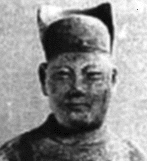Ts'ai Lun (About the EoE)
Ts'ai Lun
Ts'ai Lun (c. 50 AD-121 AD) was a Chinese inventor who is regarded as the first producer of paper (c. 105). He used the inner bark of a mulberry tree and bamboo fibers, mixed them with water and pounded them with a wooden tool. He then poured this mixture onto a flat piece of coarsely woven cloth and let the water drain through, leaving only the fibers on the cloth. Once dry, Ts'ai Lun discovered that he had created a quality writing surface that was relatively easy to make and was lightweight. The oldest surviving piece of paper in the world is made of hemp fibers, discovered in 1957 in a tomb near Xian, China and dates from between the years 140 and 87 BC. The oldest paper with writing on it, also from China, is dated to 110 AD and contains about two-dozen characters. Paper reached India in the seventh century and West Asia in the eighth. The Arabs sold paper to Europeans until it was manufactured in the West during the twelfth century.
